Since the Basic Materials sector is in the process of breaking out, I'd like to take an in-depth look at some of the stocks within the sector along with some commodities in general. Most commodities have had a tough go of it since they topped out in 2011, but there are signs they may be bottoming, which could lead to a substantial rally over the intermediate to the long term.
As you'll see, some of the bottoming formations are very symmetrical while others are pretty ugly, but as long as they can make a higher high and higher low an uptrend is in place.
Let's start with the CRB Index which built out a one year bearish rising wedge formation that broke to the downside in March of this year. The price action has been chopping to the downside, but got a bounce to the upside in late June. Normally the price objective of a rising wedge is down to the first reversal point where the pattern started to build out.
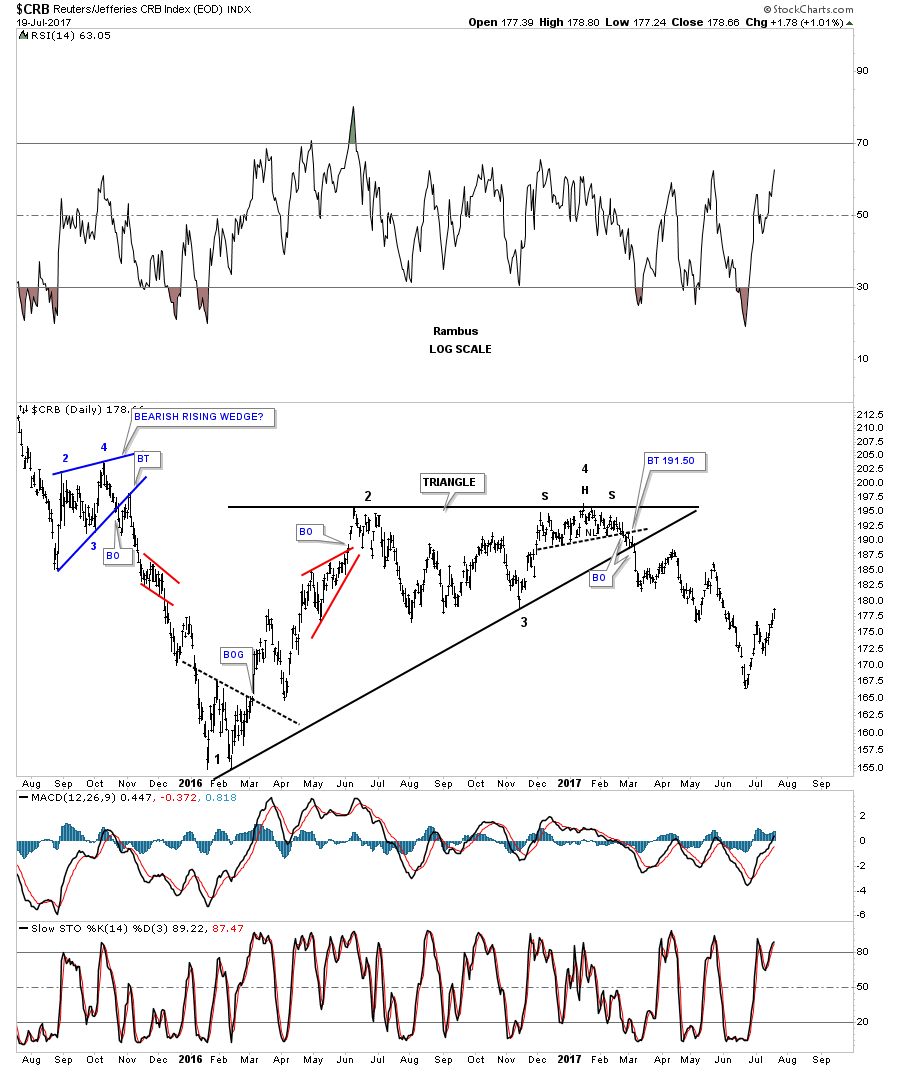
There is another pattern I’ve been keeping a close eye on which may have given us a good clue that we could have a consolidation pattern building out which is forming above the January 2016 low. As you can see on the long term daily chart for the CRB index, below, it has built out a sideways trading range which broke to the downside last month. That wasn’t a bullish development if one was bullish on this index.
Expanding patterns, whether they’re a triangle, flat top or flat bottom, expanding falling or expanding rising wedges are some of the more difficult formations to find in real time. The reason: as with the pattern on this daily chart below which shows a false breakout below the bottom rail, the blue horizontal dashed line, it looks like a breakout to the downside. With current price action closing back above the blue dashed line we now have a potential flat top expanding triangle. If the price action can close above the top horizontal trendline, the flat top triangle will be the first consolidation pattern in the CRB index’s new bull market.
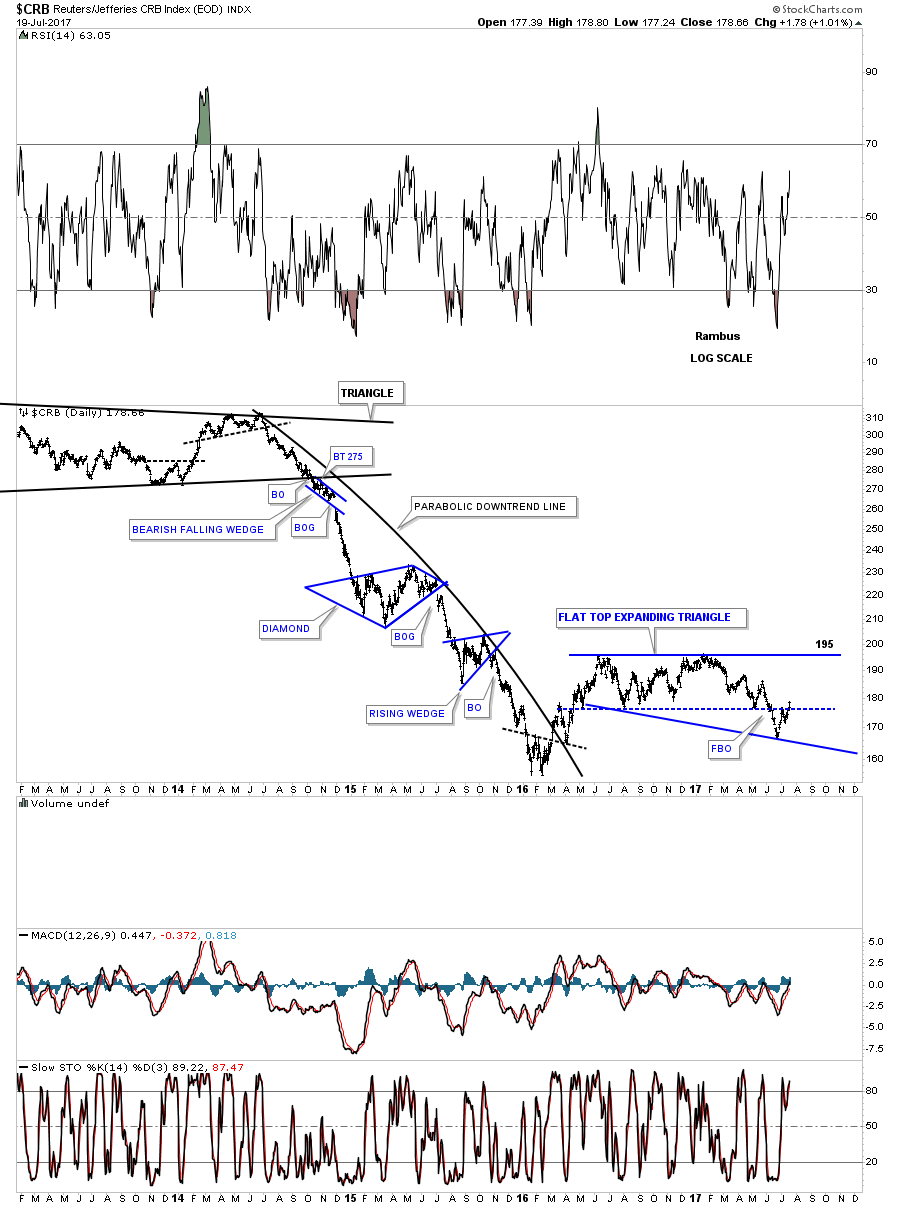
This 75-year quarterly chart for the CRB shows just just how bad the bear market has been. To really get this index bullish again I would love to see the price action trading back above the brown shaded S&R zone above 200 or so, which would create an unbalanced double bottom.
By looking at the daily chart above you can see how the unbalanced double bottom would look like if the top rail of the expanding flat top triangle is broken to the upside. If the possible unbalanced double bottom plays out, we are just in the first inning of a nine inning game.
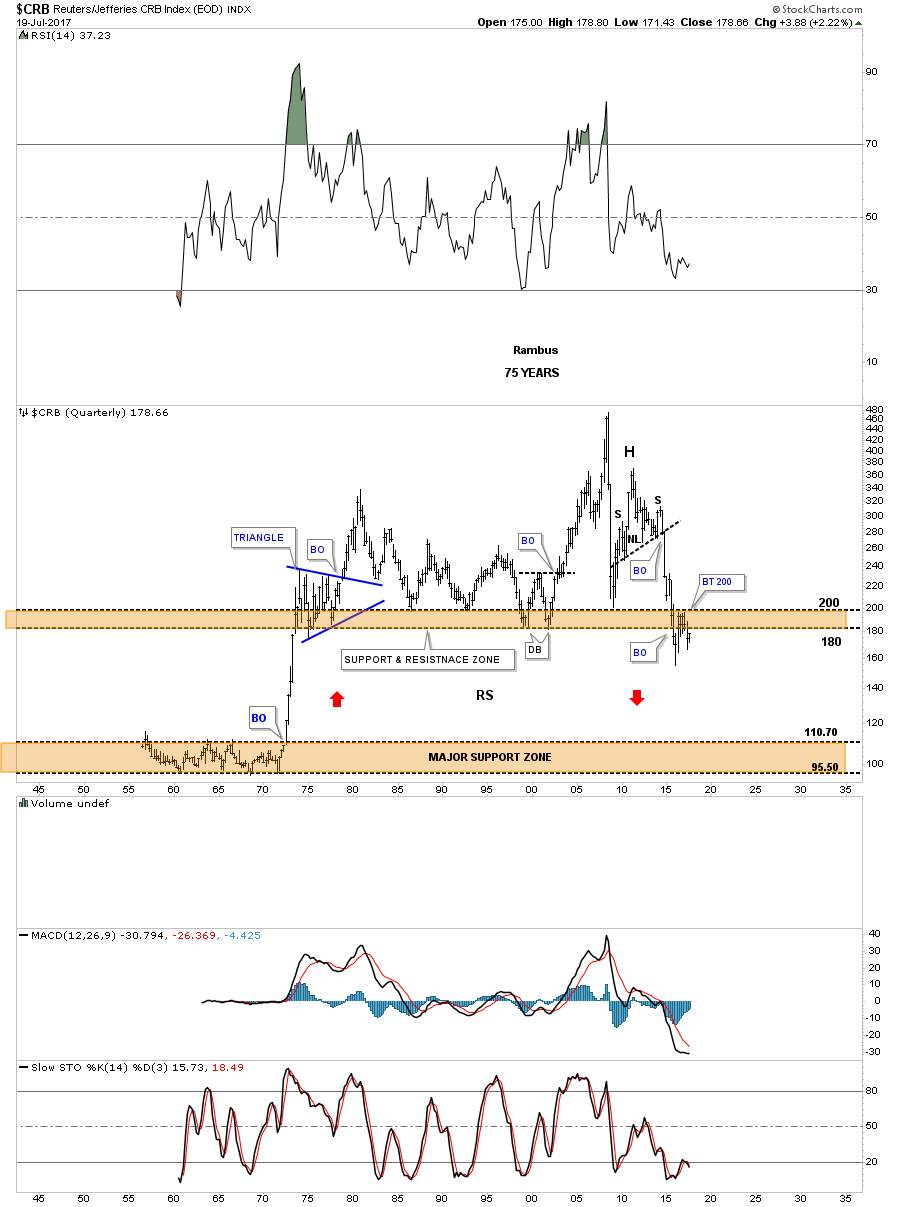
This next commodity-focused chart is a long term monthly look at the PowerShares DB Commodity Tracking Index (NYSE:DBC) which is much more actively traded than the CRB. Instead of an expanding flat top triangle, the DBC is building out a possible flat bottom triangle.
Again, this potential pattern has a chance to be a consolidation pattern to the upside if it can take out the top rail. No matter how you look at the current price action, there is still a lot of work to do before we get any type of resolution to the trading range. A break below the bottom rail will ensure a move back down to the previous low and on the other hand, a breakout above the top rail will put the bull market thesis into play.
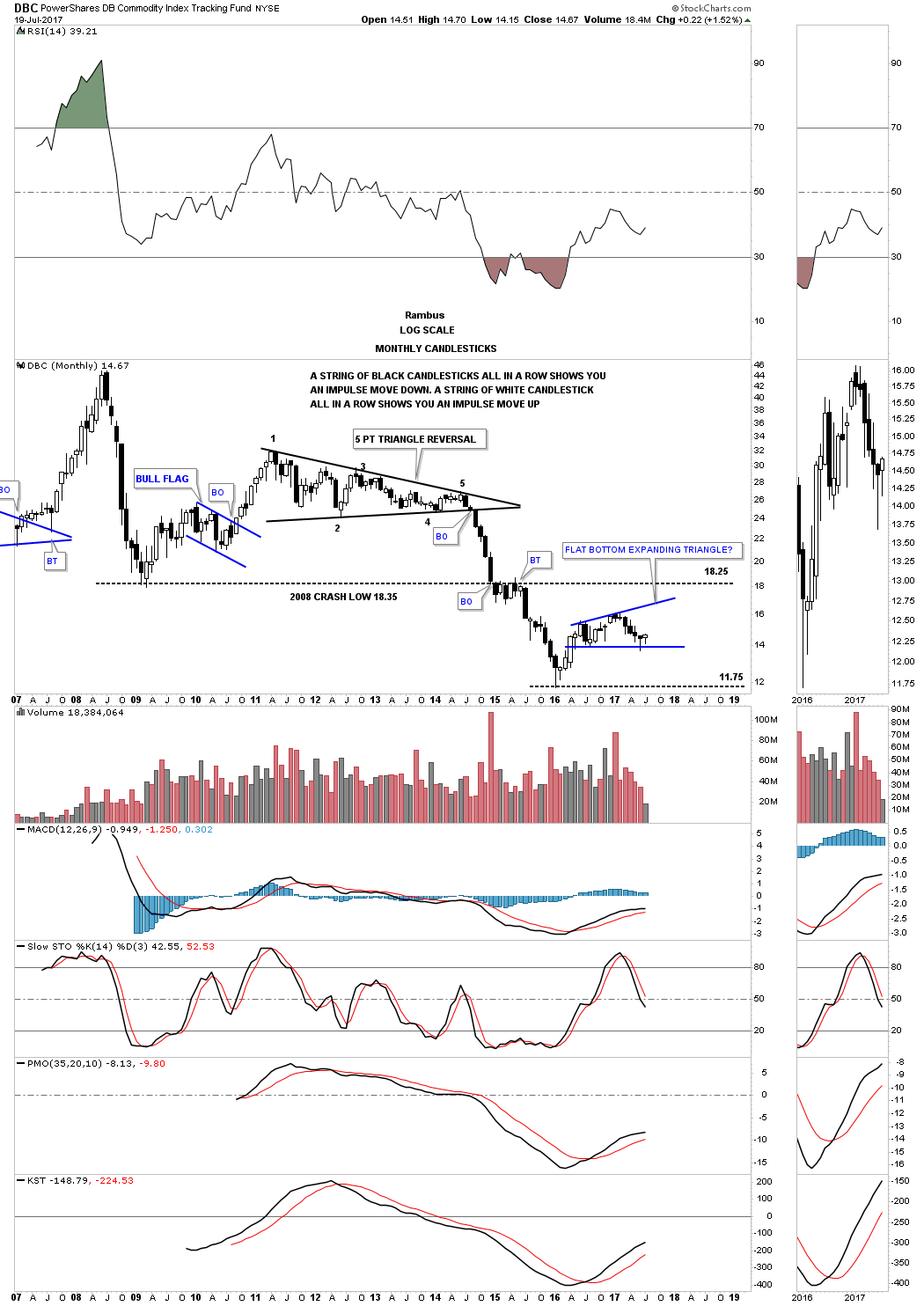
Next I would like to focus in on the Materials Select Sector SPDR (NYSE:XLB), the basic materials index, which is made up of a variety of large cap stocks from this sector. The last time I did an in-depth report on the XLB, I suggested this index should do very well as long as its top five components were doing well.
Now take a look a daily chart for the XLB, which is showing it has just broken out of a 6-month blue expanding flat bottom triangle with a small H&S bottom that formed as the backtest. Yesterday this basic materials index closed at a new all-time high.
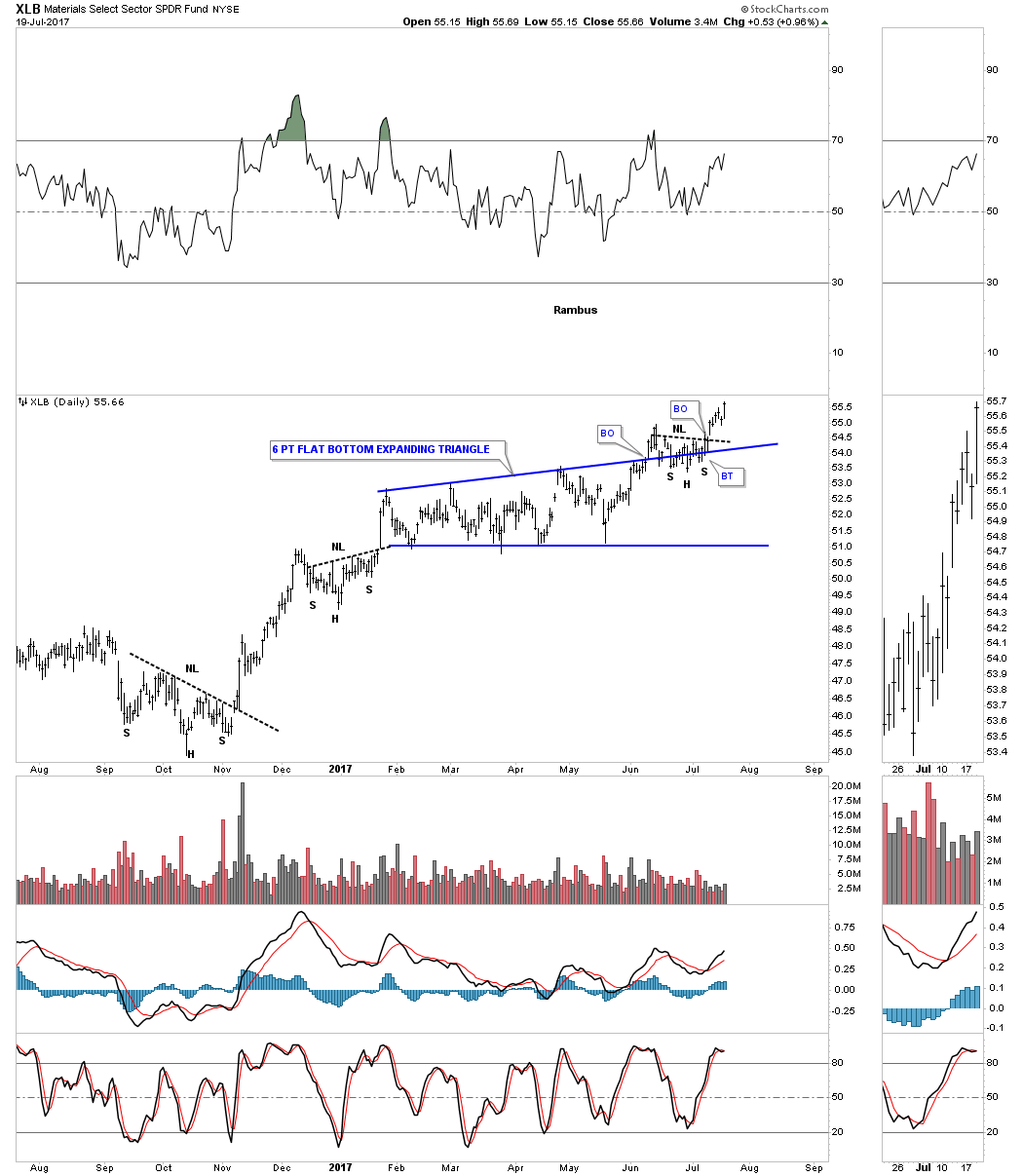
Below is a 4-year weekly bar chart showing the breakout from the 6-point flat bottom triangle consolidation pattern into new all time highs this week.
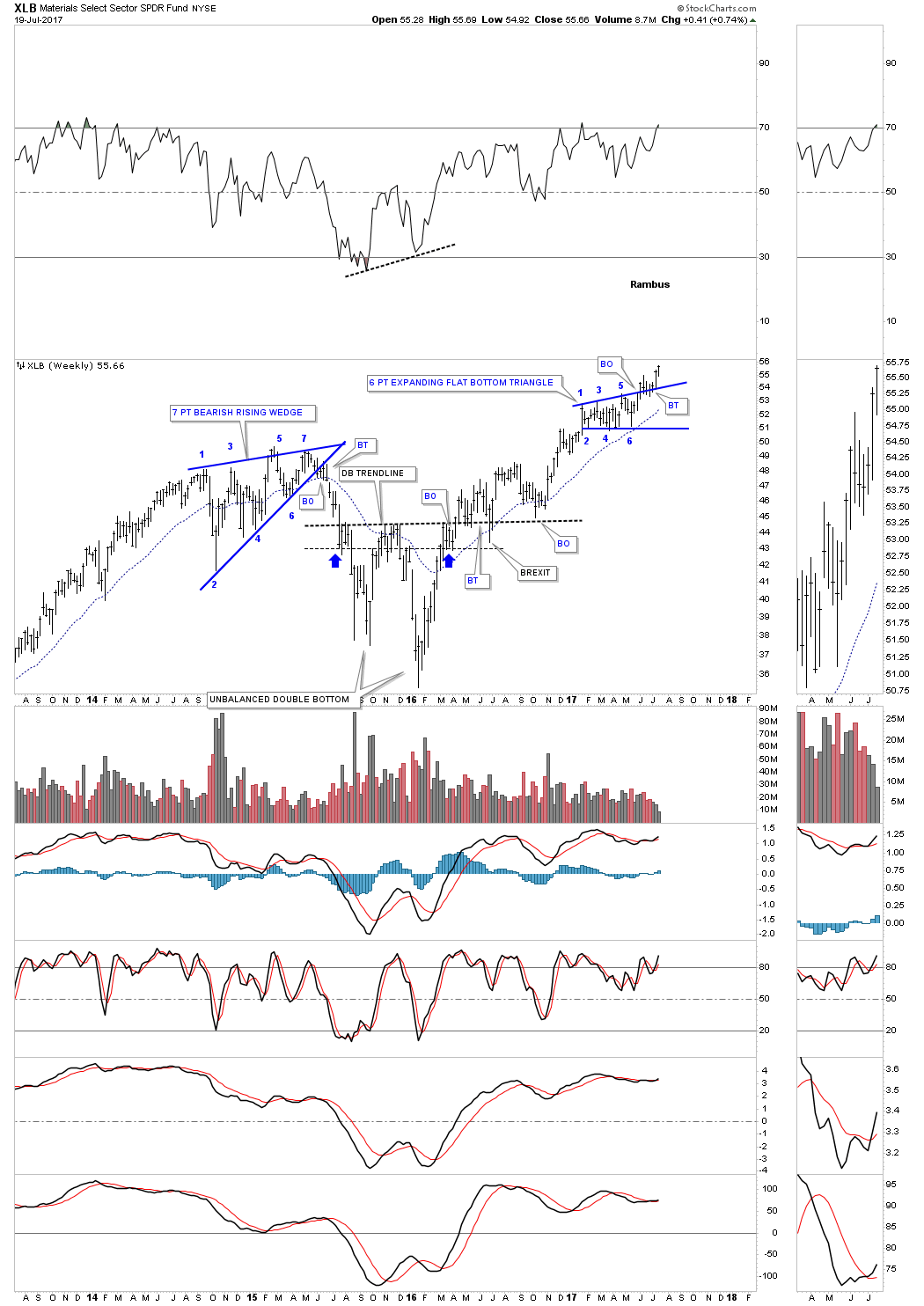
The long-term monthly chart for the XLB shows its entire history and its bull market uptrend channel. If the 6-point expanding flat bottom triangle is breaking out topside, then the original top rail of the major uptrend channel will be taken out.
Generally, when that happens you can see another equal channel higher giving the uptrend 3 equal channels instead of two. The black rectangles show how this new uptrend may play out.
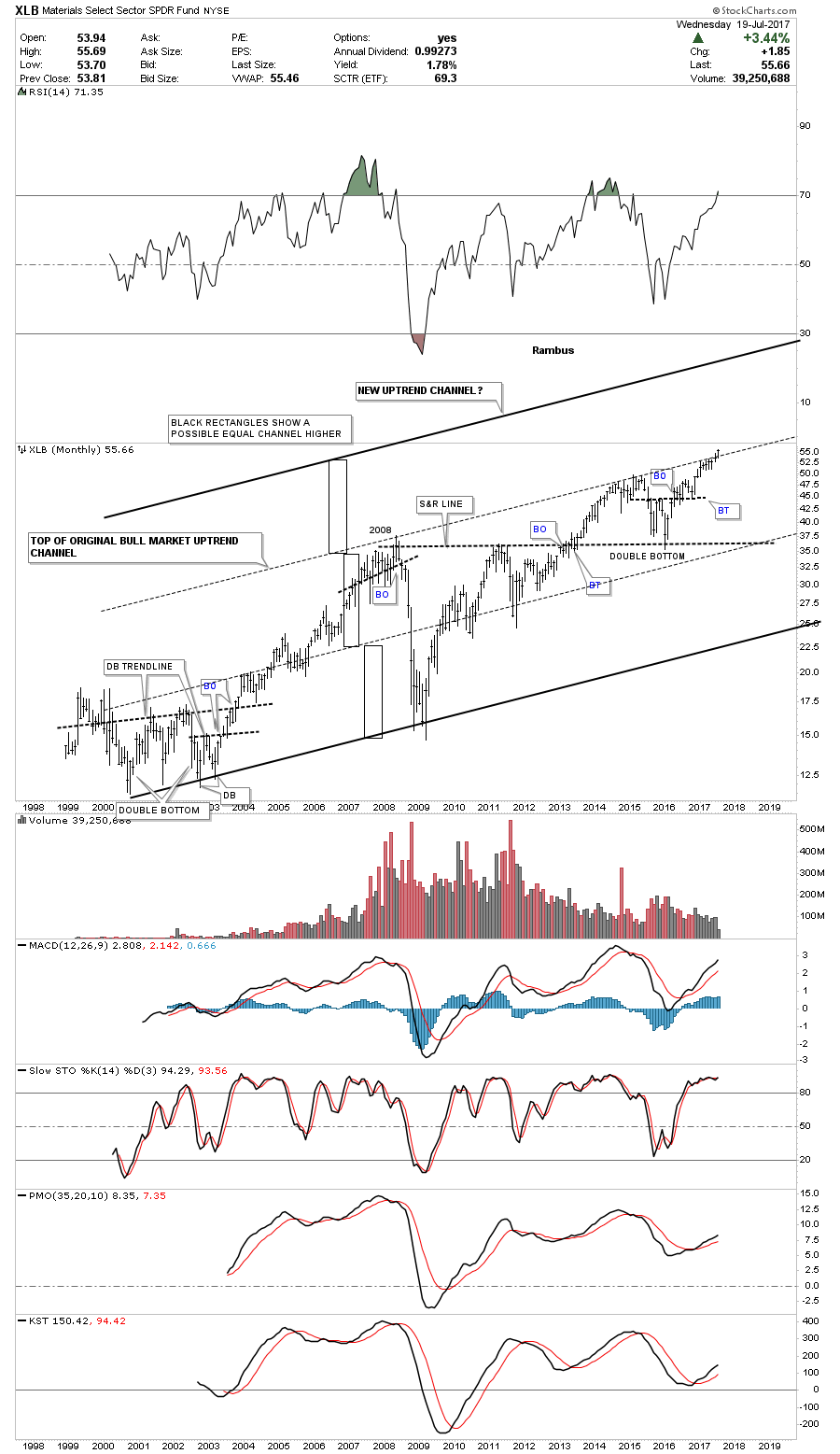
This next chart is a long-term monthly chart of the Financial Select Sector SPDR ETF (NYSE:XLF). I've been using it to show how the lower channel may be morphing into a double uptrend channel with equal lower and upper channels. This is the same principle as with the XLB chart above, which is forming a possible third channel.
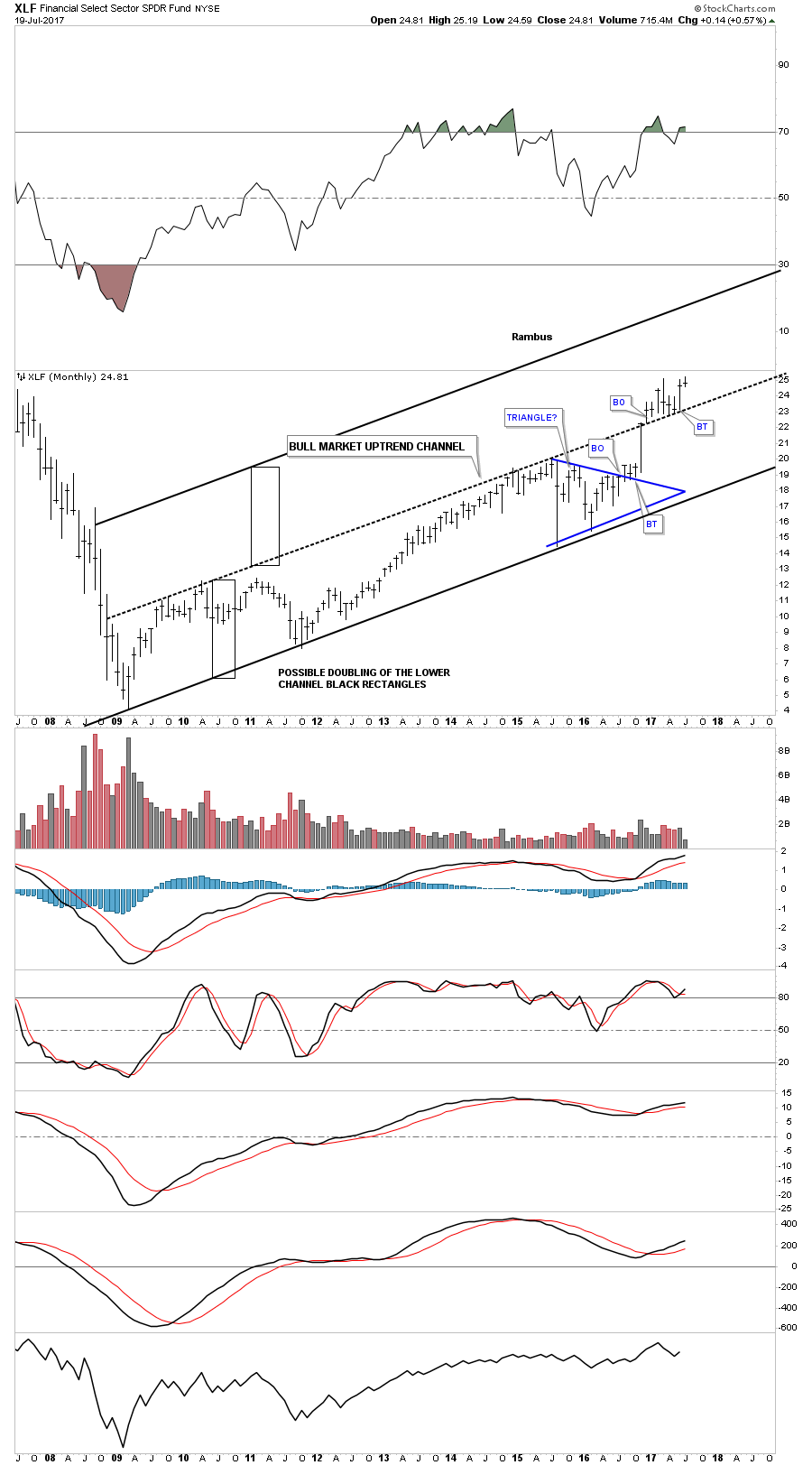
This last chart for the XLB is a monthly line chart going back 20-years. The reason the XLB looks so good is because it’s made up of many very big large cap stocks that we’ll look at in a moment.
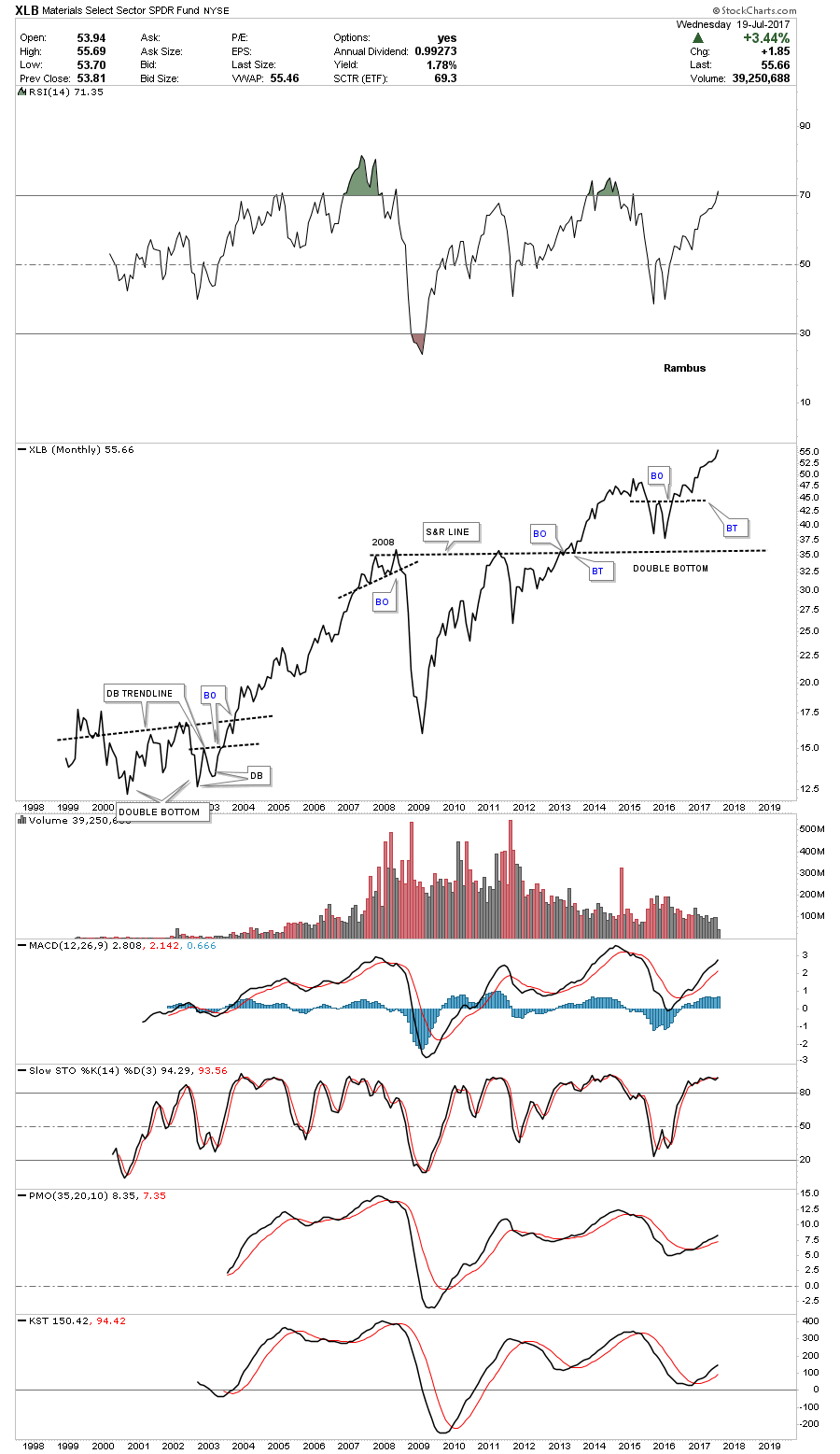
Next, look at the SPDR S&P Metals & Mining Fund (NYSE:XME), the metals and mining ETF, which broke out of a double H&S bottom last fall and has recently been backtesting the neckline, forming the blue falling wedge as the backtest. Last week the price action finally closed above the 30 week ema.
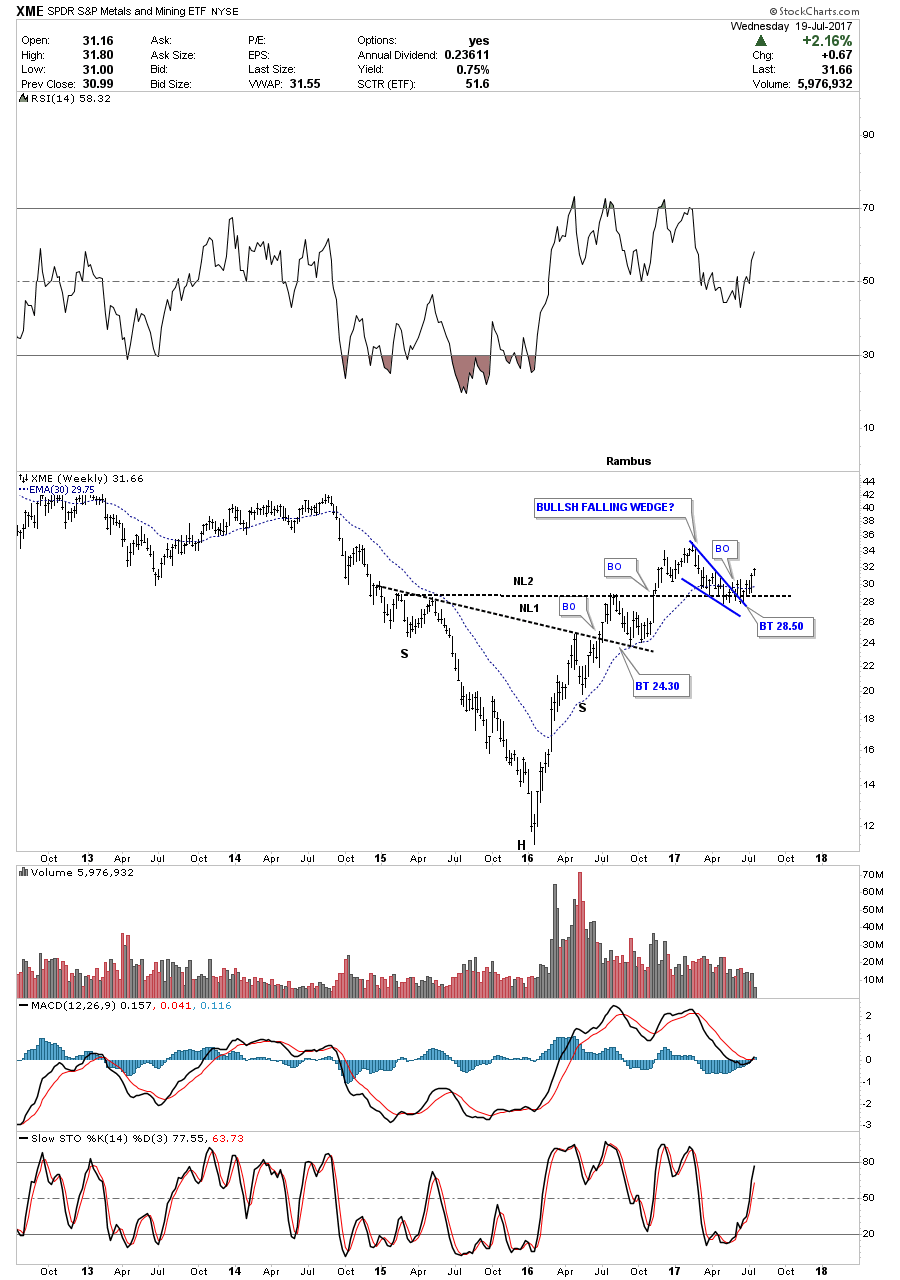
Five stocks make up nearly 45% of the XLB. They are Dow Chemical (NYSE:DOW)), Dupont (NYSE:DD), Monsanto (NYSE:MON), Praxair (NYSE:PX) and PPG Industries (NYSE:PPG). For the past two years, Dow Chemical has built out an expanding triangle that broke out to the upside about 8-months ago and is currently trading at a new all-time high. It has the highest weighting in the fund at 12.1%
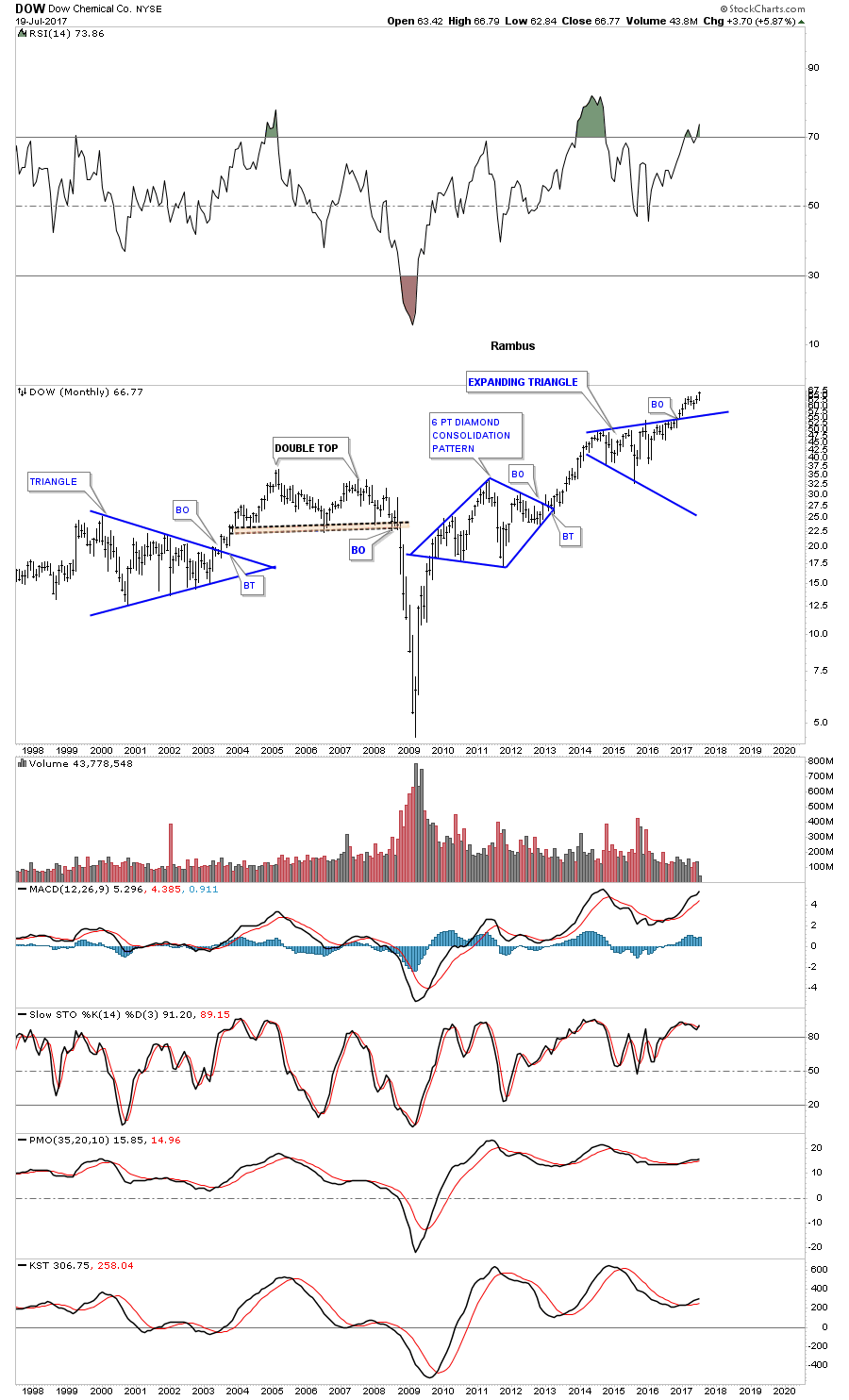
Next is DuPont which makes up 11.9% of the XLB. It has broken out of a bullish rising wedge and is also trading at a new all-time high.
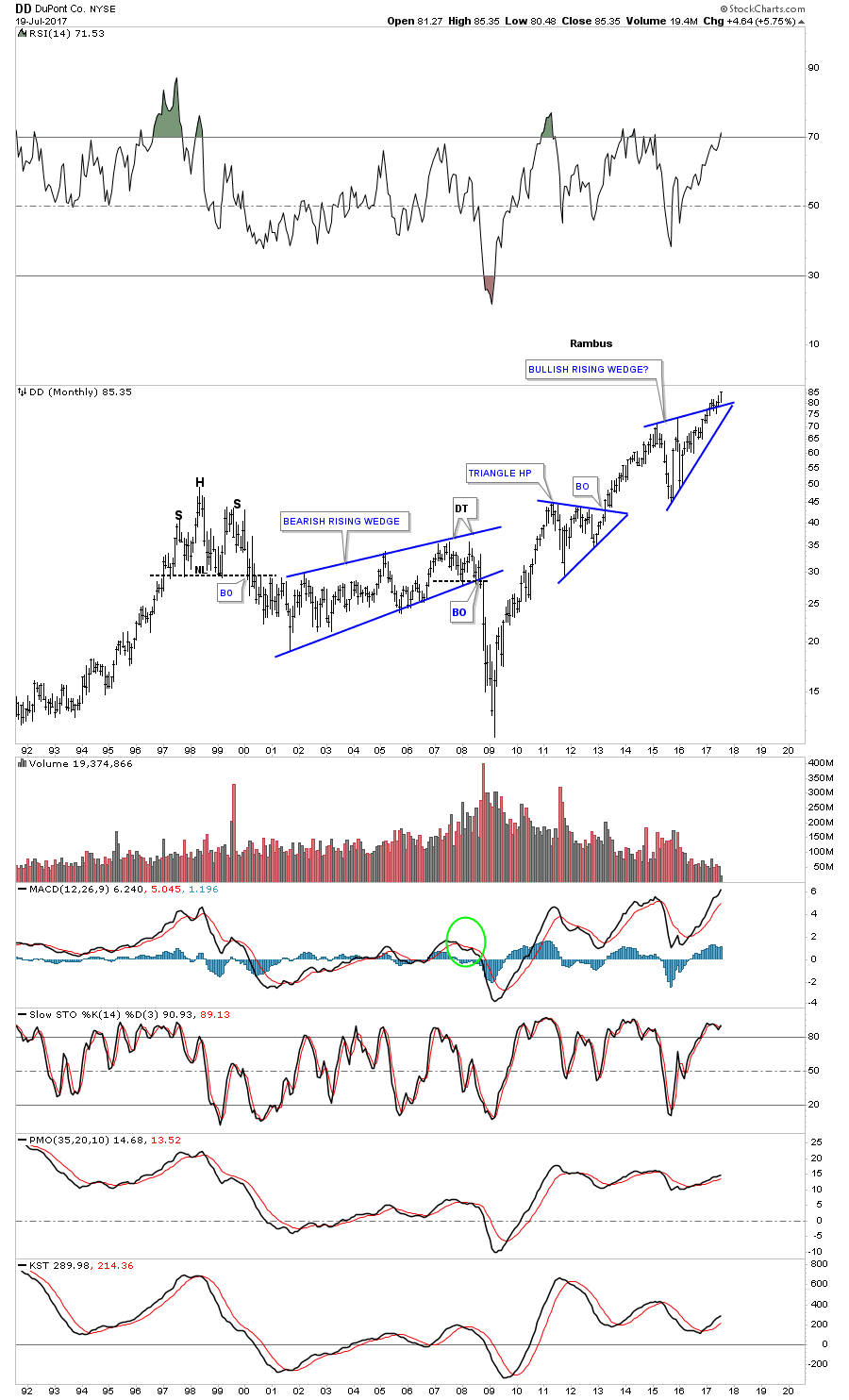
Below is a monthly chart for Monsanto which has a weighting of 9% in the XLB. It's just completing the 4th reversal point in a massive 10-year triangle trading range.
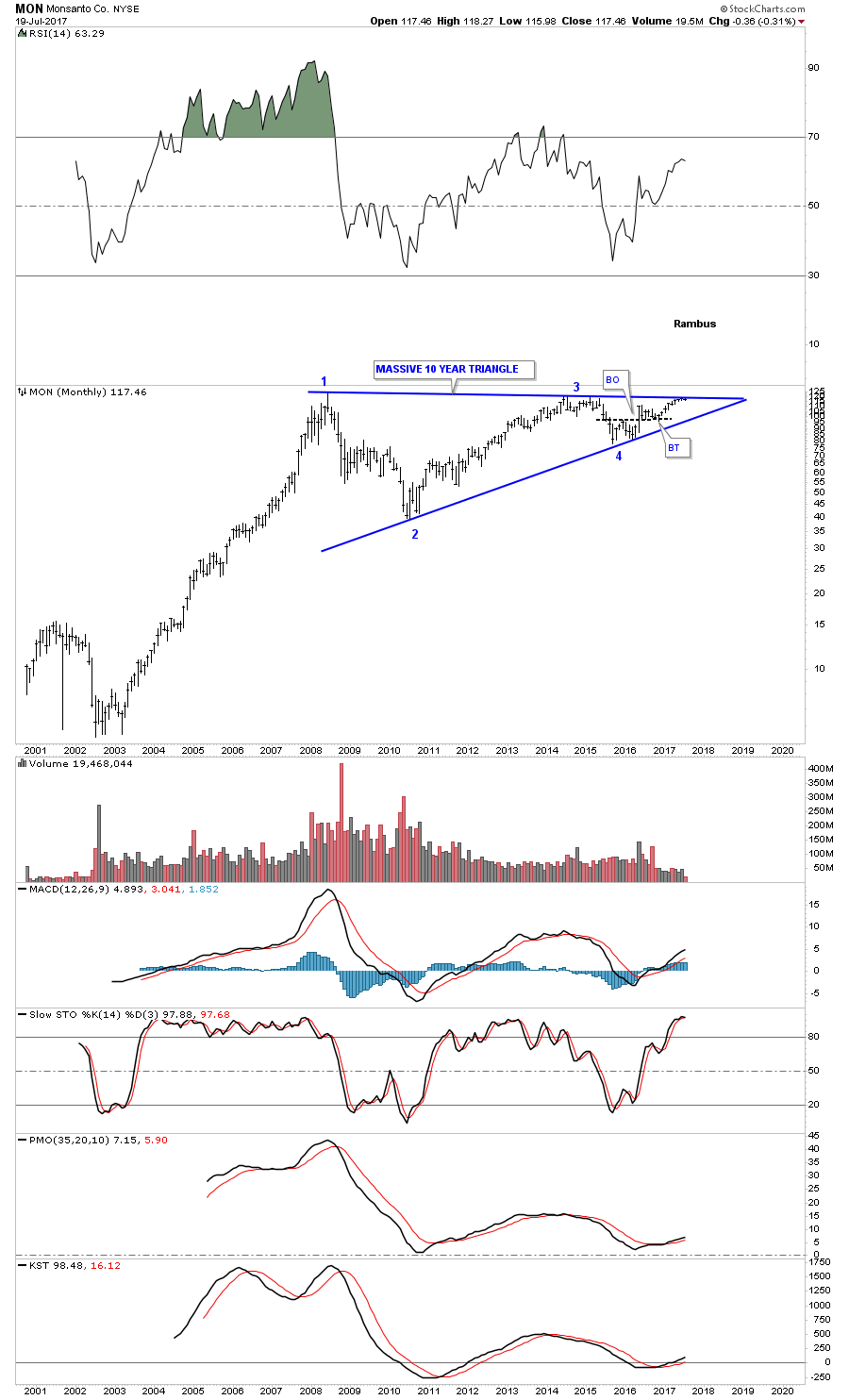
The number four stock by weight on the XLB is Praxair with a weighting of 5.9%. It too is trading close to all-time highs, though it's still trading inside of its bull market uptrend channel which began to form way back at the 2000 low.
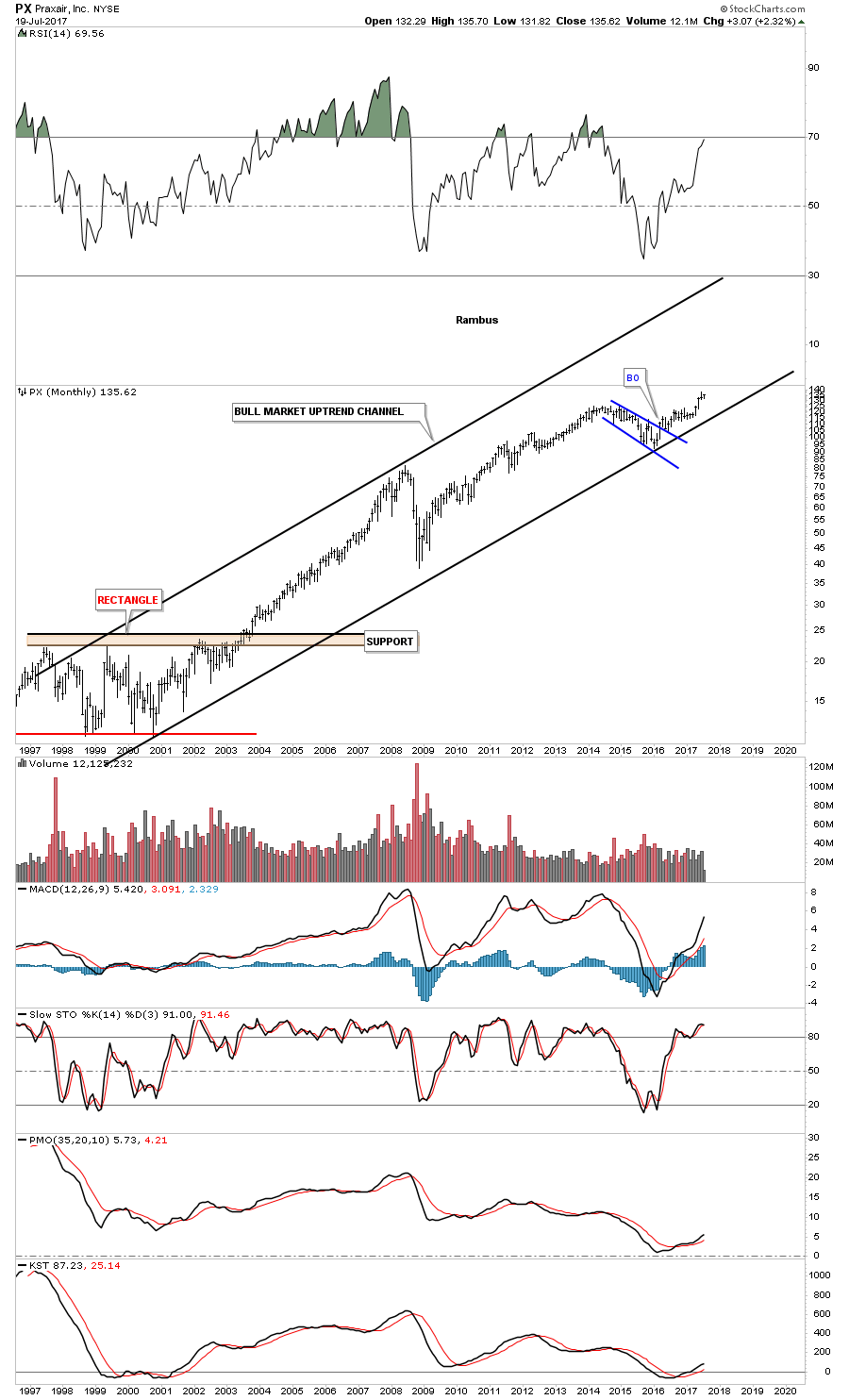
PPG Industries is the fifth largest stock by weighting, at 4.8%. It's trading close to new all-time highs as well, building out a very large triangle consolidation pattern.
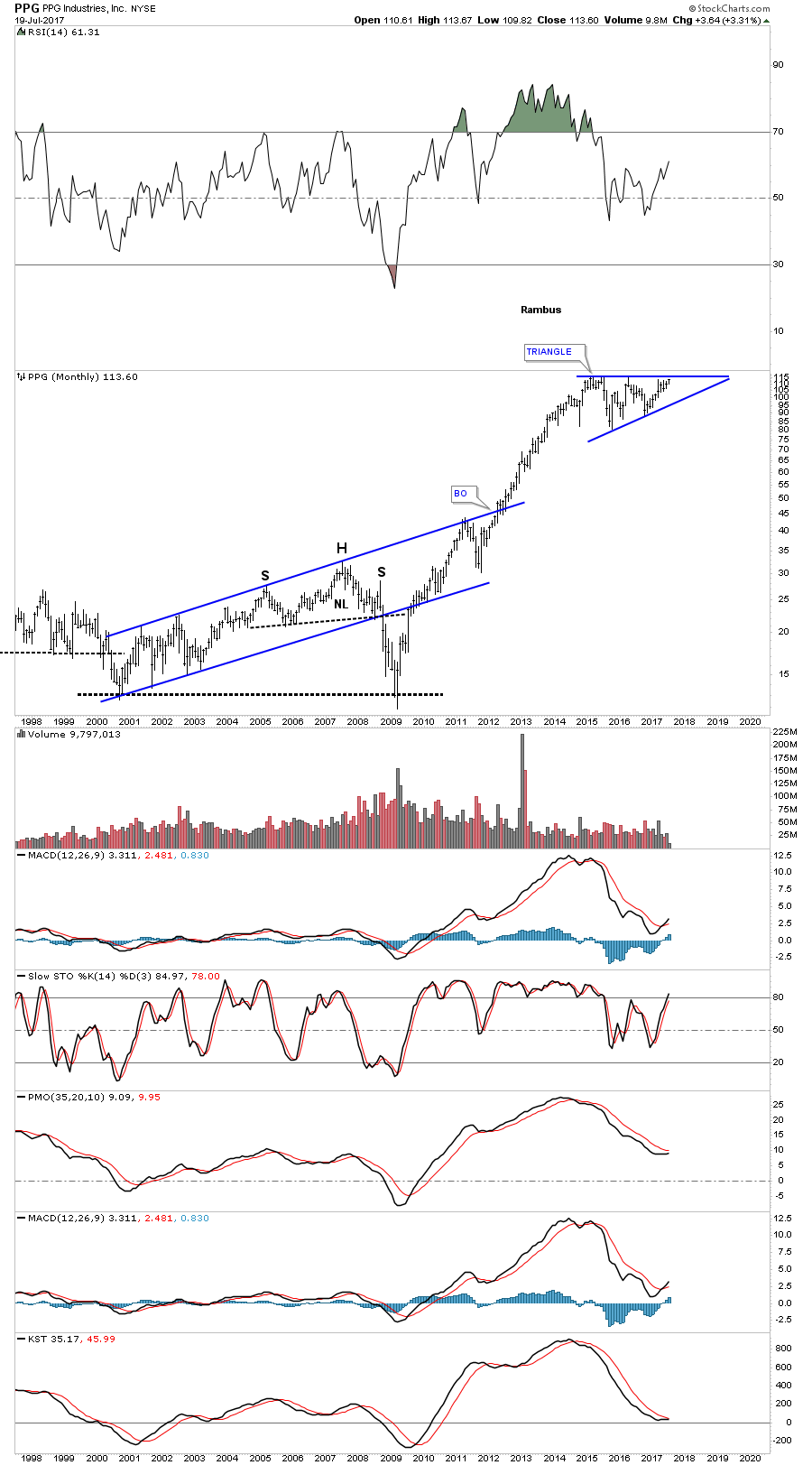
Right now, the stocks and even commodities within this market sector are which are all over the place, some showing strength while others still showing weakness. At some point, if this asset class really takes off we should see the whole complex moving up together with all areas enjoying their own individual bull markets. One step at a time.